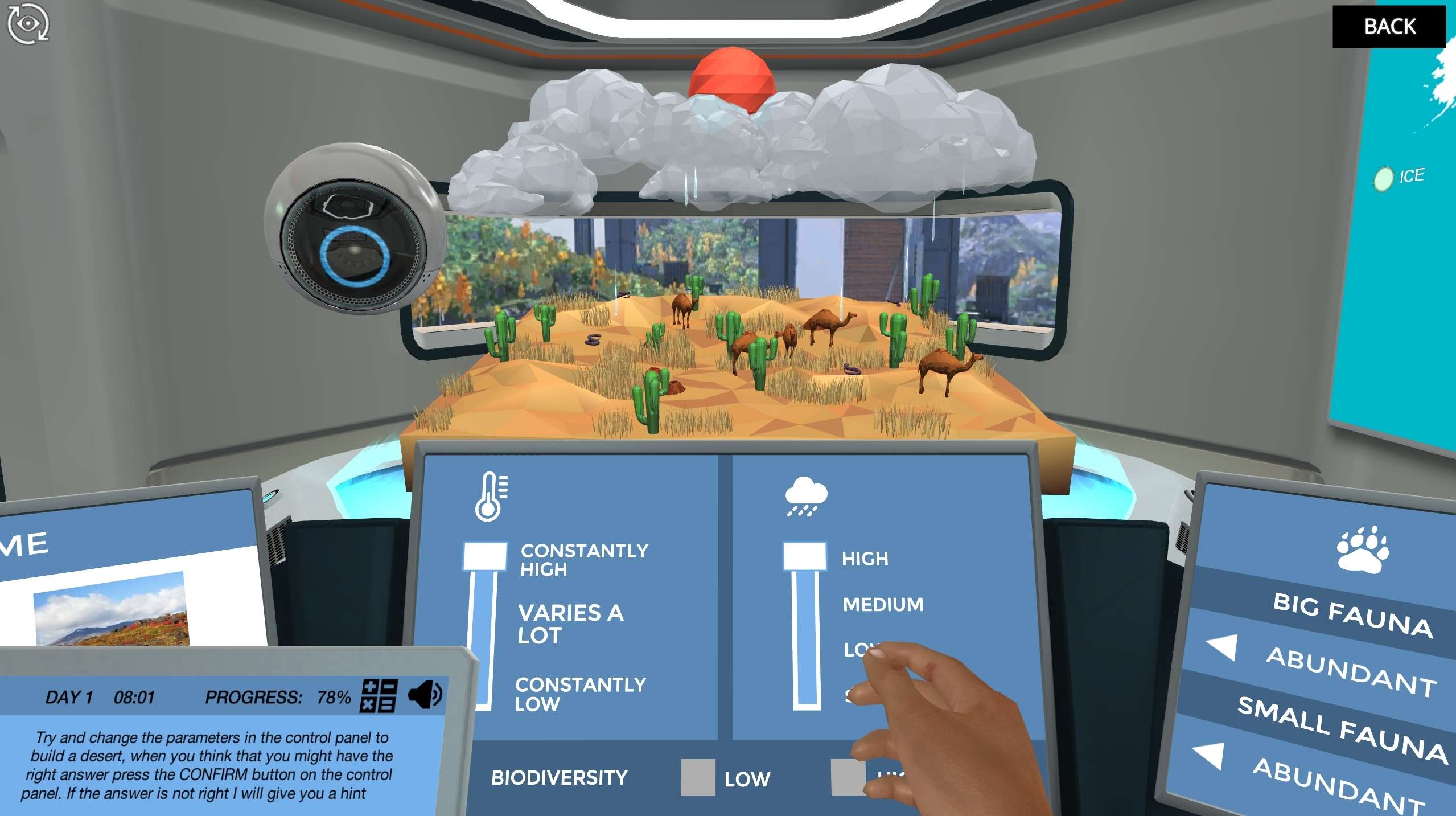Heading 1
Heading 2
Heading 3
Heading 4
Heading 5
Heading 6
Lorem ipsum dolor sit amet, consectetur adipiscing elit, sed do eiusmod tempor incididunt ut labore et dolore magna aliqua. Ut enim ad minim veniam, quis nostrud exercitation ullamco laboris nisi ut aliquip ex ea commodo consequat. Duis aute irure dolor in reprehenderit in voluptate velit esse cillum dolore eu fugiat nulla pariatur.
Block quote
Ordered list
- Item 1
- Item 2
- Item 3
Unordered list
- Item A
- Item B
- Item C
Bold text
Emphasis
Superscript
Subscript
About This Simulation
Learn about the main biomes on Earth and where they are located with our new Biome Generator. You will be able to adjust different parameters to build your own biome and observe the result of your changes instantly!
Learning Objectives
- Explore the definitions of ecosystems, biodiversity and habitats.
- Define and relate biomes, ecosystems and habitat
- Explain the basic concept of biodiversity
- Differentiate between the different biomes
- Relate climate and geology to the structure and biogeography of biomes and ecosystems
About This Simulation
Lab Techniques
Related Standards
- HS-LS2-2
- HS-LS2-5
- Biology Unit 8: Ecology
- 4.4 Climate change
- Biology C.2 Communities and ecosystems
- Biology C.3 Impacts of humans on ecosystems
- 4.1 Species, communities and ecosystems
Learn More About This Simulation
Biomes are literally all around you - you even live in one! In this simulation, you will learn about the concepts of Biodiversity, Biomes and Ecosystems, and you will also be able to locate the main biomes on Earth.
Learn about the different biomes on Earth
With our Biome Generator, you can freely experiment and adjust different parameters to create different biomes. Identify the main parameters that define the major biomes on Earth, such as climate, flora, fauna and geology, to understand where they are located.
Re-create Earth’s main biomes
Try as many times as you need to generate the different biomes. In our Biome Generator, you will be able to see how your choices will influence the final result. Made a mistake? No worries, try again!
Find the right match for each biome
Once you have built your own biome, you will be able to see how they match to the ones on Earth. Don’t be afraid of making mistakes - our friendly virtual assistant Dr. One can help and point you in the right direction.
For Science Programs Providing a Learning Advantage
Boost STEM Pass Rates
Boost Learning with Fun
75% of students show high engagement and improved grades with Labster
Discover Simulations That Match Your Syllabus
Easily bolster your learning objectives with relevant, interactive content
Place Students in the Shoes of Real Scientists
Practice a lab procedure or visualize theory through narrative-driven scenarios


FAQs
Find answers to frequently asked questions.
Heading 1
Heading 2
Heading 3
Heading 4
Heading 5
Heading 6
Lorem ipsum dolor sit amet, consectetur adipiscing elit, sed do eiusmod tempor incididunt ut labore et dolore magna aliqua. Ut enim ad minim veniam, quis nostrud exercitation ullamco laboris nisi ut aliquip ex ea commodo consequat. Duis aute irure dolor in reprehenderit in voluptate velit esse cillum dolore eu fugiat nulla pariatur.
Block quote
Ordered list
- Item 1
- Item 2
- Item 3
Unordered list
- Item A
- Item B
- Item C
Bold text
Emphasis
Superscript
Subscript
A Labster virtual lab is an interactive, multimedia assignment that students access right from their computers. Many Labster virtual labs prepare students for success in college by introducing foundational knowledge using multimedia visualizations that make it easier to understand complex concepts. Other Labster virtual labs prepare learners for careers in STEM labs by giving them realistic practice on lab techniques and procedures.
Labster’s virtual lab simulations are created by scientists and designed to maximize engagement and interactivity. Unlike watching a video or reading a textbook, Labster virtual labs are interactive. To make progress, students must think critically and solve a real-world problem. We believe that learning by doing makes STEM stick.
Yes, Labster is compatible with all major LMS (Learning Management Systems) including Blackboard, Canvas, D2L, Moodle, and many others. Students can access Labster like any other assignment. If your institution does not choose an LMS integration, students will log into Labster’s Course Manager once they have an account created. Your institution will decide which is the best access method.
Labster is available for purchase by instructors, faculty, and administrators at education institutions. Purchasing our starter package, Labster Explorer, can be done using a credit card if you are located in the USA, Canada, or Mexico. If you are outside of North America or are choosing a higher plan, please speak with a Labster sales representative. Compare plans.
Labster supports a wide range of STEM courses at the high school, college, and university level across fields in biology, chemistry, physics, and health sciences. You can identify topics for your courses by searching our Content Catalog.















